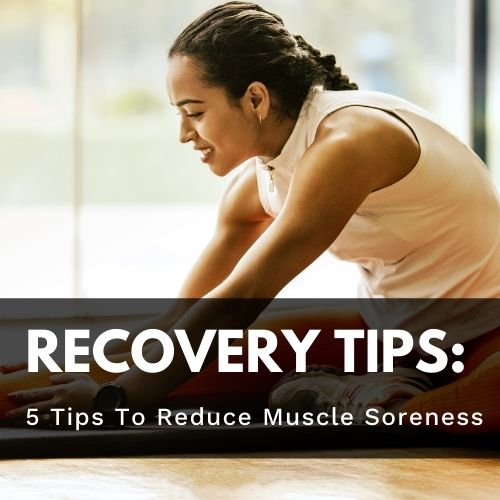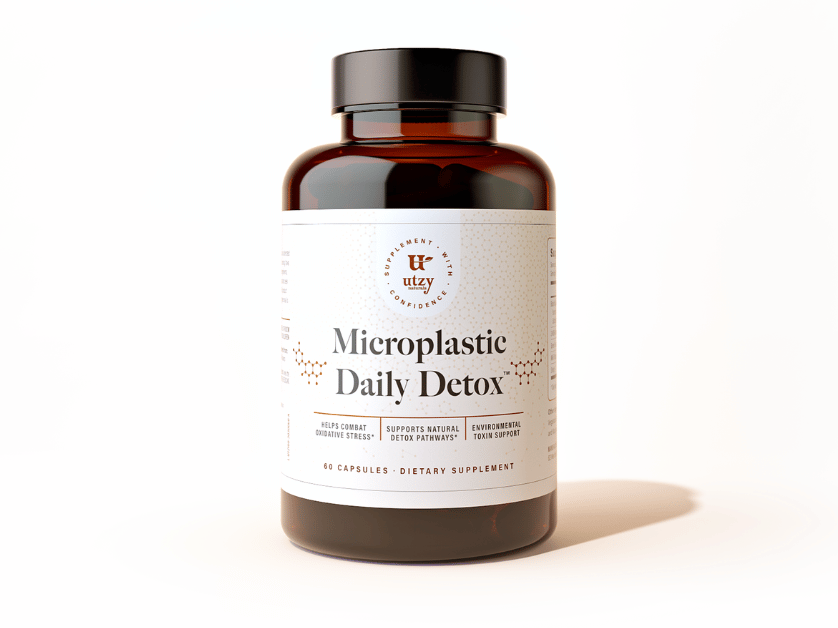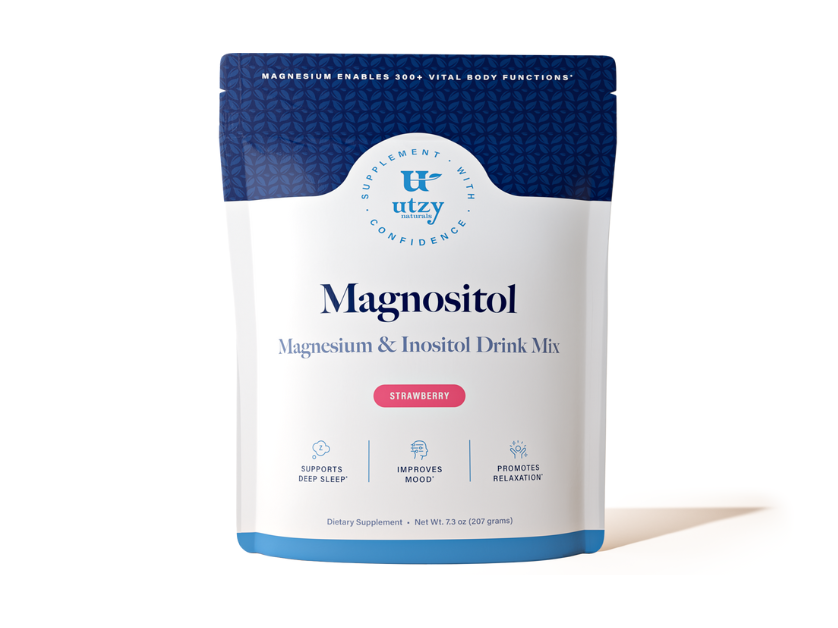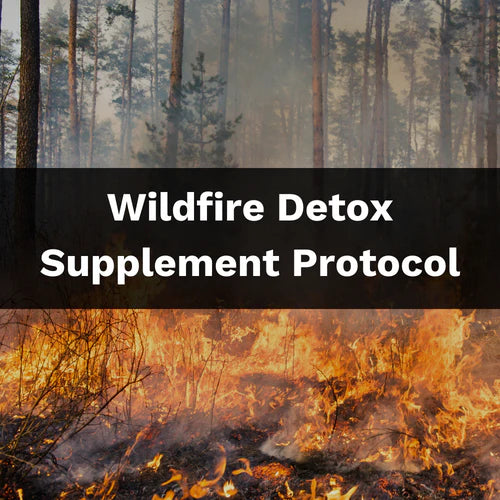shop
learn

5 Tips To Reduce Muscle Soreness
August 23, 2022 5 min read
Everyone experiences sore muscles after a workout, but for some, it can be discouraging.
Fortunately, there are ways you can reduce post workout muscle soreness.
Why Do You Get Sore?
When you engage in a physical activity, you are placing a demand on the muscles within your body.
When muscles are required to work harder than they're used to or in a different way, it's believed to cause microscopic damage to the muscle fibers, resulting in muscle soreness or stiffness (1).
Recovery means rebuilding the muscle you broke down during exercise. What you do the hours and days following exercise will determine how sore you will get.
Here are the 5 things you should do after exercise to improve your muscle recovery.

1. Hydrate Correctly
Proper hydration is foundational for optimal health and wellness. But many people casually dismiss it.
You shouldn’t.
Your muscles are made up of 75% water (source). This means that water is an important component to keeping your muscles healthy and getting them to work efficiently.
In addition, there are hundreds of other cellular reactions in the body which also require water. Just by sweating alone, you lose both water and electrolytes.
According to a study, the average person (in the US) drinks about 3.9 cups of water everyday. This is woefully short of what your body needs.
You might be asking how much water should you really be drinking per day?
In general, for an active adult, the rough estimate is to drink half your bodyweight in ounces of water every day.
If you are wondering, the food, veggies, and coffee you already consume do count toward your water total. The body just has to convert them to a more usable form.
2. Take A Fish Oil Supplement
Fish oil contains omega-3 fatty acids that help to reduce workout-derived inflammation (source). This is important because as you exercise, you are causing your muscles to breakdown.
This muscle breakdown creates inflammation in the body (don’t worry, this is good inflammation). This inflammation cues your body to begin the rebuilding and recovering process. Omega-3’s help reduce that inflammation and reduce soreness during recovery.
Consider a high quality fish oil supplement such as our Omega-3 Fish Oil.
When buying fish oil, look for a high quality, natural triglyceride fish oil. This is the natural form of fish oil, and has the best absorption in your body.
Other supplements like cistanche can help to improve recovery and exercise performance. Learn more about the benefits of cistanche here.
3. Eat The Proper Nutrients
Eating the right types of food can also help rebuild your muscles during the recovery phase. Good muscle recovery foods are those high in potassium.
High potassium foods include:
- bananas
- oranges
- melons
- raisins
- potatoes
A study with tart cherry juice showed that cherries might be effective in aiding recovery and reducing muscle damage, inflammation and oxidative stress.
Cherries have antioxidant and inflammation-lowering agents, which help with inflammation and muscle recovery.
In addition to the above mentioned foods, protein is also crucial for muscle recovery. Protein is the building block of muscle
High protein foods include:
- meat
- eggs
- dairy
According to a recent study, eating or drinking protein at night improves overnight muscle recovery.
Taking an inflammatory balance supplement like Inflavinol is another great option. It provides a blend of natural herbs that work to restore inflammatory balance within your body.
4. The Benefits of Cryotherapy and Hot Therapy
In a 2012 report, researchers looked at 17 studies involving 400 people. It consisted of a 60°F ice bath for at least five minutes after exercise. This reduced muscle soreness by 20 percent compared to those who had not had an ice bath.
If a full body ice bath does not sound appealing, add a cold pack to sore muscles for 10 minutes on and 10 minutes off to aid in recovery. Adding cold will constrict blood vessels to help with swelling.
Hot therapy increases blood flow to the area after swelling has subsided. Heat therapy generally consists of dry heat, using heating pads or packs, or wet heat, meaning hot baths and saunas.
This 1-2 punch is an effective combo. Limit the exposure time to 20 minutes at a time for both hot and cold therapy on muscles or joints.
5. Utilize Massage Therapy
One of the most under-rated activities for muscle recovery is self-massage. Use it as a supplement for those times you can’t make it to see a massage therapist.
You can always use your hands to massage sore muscles. However, another option is to invest in a massage aid.
The TP BuddieRx is an anatomical muscle recovery stick designed to help you maintain healthy muscles. Learning how to use it will help you to reduce muscle soreness and zone in on specific trigger points. This can be especially helpful if you have a knot in your calf.
Aside from all the technical information, you can use your body to teach you what to fix. Sore and painful muscles will lead you to the correct muscle groups to massage.
After you find a sore muscle, then massage with long strokes up and down the length of the muscle to isolate the place where the pain is originating.
Alternating pressure on this muscle knot for 5-15 seconds may work to improve soreness and lessen pain. This is best done on lower body muscles where access is easy.
This only takes 15 minutes or less a day. Do it when you are winding down your day, it will help to relax your body and mind.
What to Do About Muscle Cramping
According to the Mayo Clinic, muscle cramping can be a result of dehydration, muscle strain or overuse.
If you experience consistent muscle cramping, some of the suggestions already discussed could be helpful in restoring hydration, adequate blood supply or reducing nerve compression.
One thing that is often overlooked is mineral depletion.
Magnesium is a crucial mineral used in over 300 different enzymatic processes in the body, and also happens to be the #1 mineral deficiency in the United States.
A quick and easy solution for many is to supplement with a quality magnesium powder. This can not only provide benefit for your muscles, but can also contribute to relaxation and improved sleep.
Utzy's magnesium powder, U-Mag, is a delicious organic lemon-flavored fizzy drink that is sugar free and easy for your body to absorb.
In Conclusion:
Exercise does amazing things at any age.
Keeping your body and muscles healthy after exercise is a learning process.
Muscle recovery can be unique to each individual, but incorporate these fundamental tips to ensure you stay active for many more years to come.

Leave a comment
Comments will be approved before showing up.
Also in Health
Subscribe
Sign up to get the latest on sales, new releases and more …
Join the Utzy Naturals Club!
Sign up and get the latest on sales, new releases, and more...





